Top Stories
_____________________________________________
 Fat Jump Pro (By SID On)Developer: SID On Price: $0.99 Version Reviewed: 1.2 Download: here Requirements: Compatible with iPhone, iPod touch, and iPad.Requires iOS 4.0 or later. Located in the Warsow,Poland-SID on an independent mobile application developer has announced a recent update of Fat Jump Pro for the iPhone,iPad and iPod touch.Fat Jump Pro is a fast paced vertical arcade action for the iOS devices.Using the tilt controls the player must guide the jumping,little green hero (a healthy and crispy cucumber) up a never ending series of platforms... |
|
Latest Stories
______________________________________________
Friday, 30 December 2011
2011 in review: The year in Mac
Do you like this story?
Steve Jobs
The story of the year for Apple—and for technology, business, and pop culture in general—was the death of Steve Jobs on October 5, 2011. Jobs had battled cancer since 2004, taken a medical leave of absence twice, and undergone a liver transplant in 2009.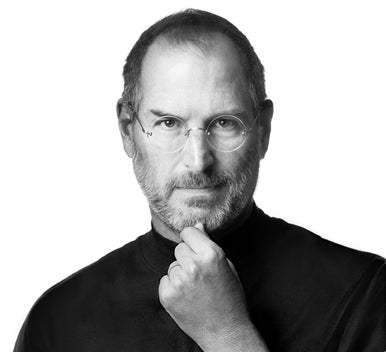
Steve Jobs died in October from pancreatic cancer.
Jobs was intensely guarded about his personal life, and details about his illness were not disclosed when he was alive. (In fact, at this time last year, I wrote that Jobs was alive and well. Alive, yes, but he wasn’t well.) But a few weeks after his death, the publication of the biography Steve Jobs allowed the public to know much more about the man. Written by Walter Isaacson, the book not only detailed the highlights of Jobs's career and the products that made Apple successful, it also covered his childhood, his life with his wife, children, and sister, and his illness, among many other things. The book quickly became a best-seller.
Tim Cook, Apple’s new CEO
In August, weeks before his death, Steve Jobs resigned as Apple CEO, and he recommended Tim Cook as his replacement. Cook, who had previously served as Apple’s chief operating officer, as well as interim CEO during Jobs’s medical leaves, was immediately named Apple CEO.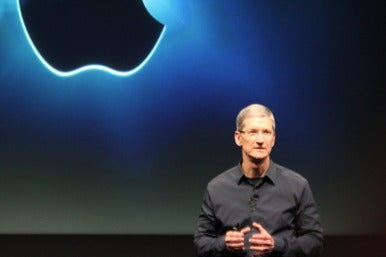
Apple CEO Tim Cook
Jobs can’t be replaced by one person, but Apple certainly isn’t doomed. The Apple executive team will work together to maintain the company’s success now and into the future.
Start of the Lion era
We provided a close look of the new features in Lion. Senior Editor Dan Frakes put together a complete guide to installing Lion, and Senior Contributor Ted Landau offered a few fixes for troublesome Lion installations. Landau also looked at some compatibility issues your applications may have with Lion.
Initially, Lion was available only through the Mac App Store for $30. On the day of Lion’s release, Apple reported more than 1 million downloads of the new OS. In August, Apple released a $69 USB installer for anyone who did not or could not download the OS from the Mac App Store.
Mac App Store opens for business
The Mac App Store, which played a major role in the release of Lion, opened its virtual doors during the first week of January. At first, the store had more than 1000 Mac apps; the store now has several thousand programs. It gives Mac users a very easy way to find and buy software, often at very attractive prices. The Mac App Store has become a core part of the Mac experience.
Apple launches iCloud
In October, Apple’s free iCloud service was made available to the public through the OS X 10.7.2 system update. iCloud uses the Internet to provide access to your documents and content on all your devices, without your having to put much effort into syncing your data. For more information, you can read our article that answers the most frequently asked questions about iCloud. If you haven’t signed up yet, Macworld Staff Editor Serenity Caldwell tells you what you need to know to get started with iCloud.
Thunderbolt strikes
The introduction of Thunderbolt was the major development for Mac hardware in 2011. Previewed years ago as Light Peak, Thunderbolt is a connectivity technology developed by Apple and Intel. Its high speed is ideal for external storage devices, video-capture hardware, network interfaces, and video for displays. Thunderbolt made its debut in February, with the release of the Early 2011 MacBook Pro models, and is now standard with all new Macs—it was also included in the 2011 models of the iMac and Mac mini. New technologies like Thunderbolt inevitably raise questions, and Macworld Senior Editor Dan Frakes answered the most frequently asked questions about Thunderbolt.To take advantage of Thunderbolt, you need Thunderbolt devices—but unfortunately, such devices are only slowly trickling out to market. The first Thunderbolt peripherals to arrive, the Pegasus R4 and R6 RAID arrays from Promise, shipped four months after Thunderbolt’s debut. Although the benchmarks from the Pegasus R6 were impressive, the product's specs and pricing are indicative of the Thunderbolt peripherals that are actually available—they’re high-end, pricey devices ideally suited for professionals. Macworld contributor Joel Mathis found that component prices and technical issues have hindered the release of Thunderbolt peripherals.
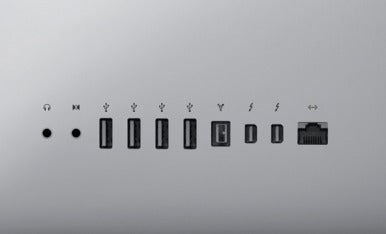
Thunderbolt ports, such as the two here between the FireWire and ethernet ports on the back of the 2011 iMac, were introduced as standard features on updated Macs.
MacBooks dominate
The MacBook Air is now the darling of Apple’s Mac lineup. It’s not the fastest Mac, but it offers excellent performance in an ultraportable design that’s very appealing—so appealing, in fact, that PC manufacturers are using Intel’s Ultrabook platform to make laptops that are very much like the MacBook Air.
The MacBook Air set a standard of excellence that PC manufacturers hope to replicate.
The evolution of the MacBook Air led to the demise of the plastic, entry-level MacBook. Customers looking for a Mac laptop on a budget will have to turn to the $1199 13-inch 2.4GHz Core i5 MacBook Pro, or to one of the 11-inch MacBook Air models, priced at $999 and $1199. If you really want a plastic MacBook, you’ll have to find a used one for sale, or check the refurbished section of the Apple Online Store regularly (there weren’t any refurbished MacBooks when I checked last week).
Apple released not one, but two updates to the MacBook Pro in 2011. The first update was in February, while the current MacBook Pro models were introduced in October. The update in February saw the end of the Core 2 Duo being used in the MacBook Pro, and ushered in the new Sandy Bridge processors. The update in October bumped up the processor speeds, storage capacity, and graphics.
Desktop Macs
The major desktop development appeared with the Mac mini update in July—the computer came on the scene without a SuperDrive, bringing back memories of when Apple decided to do away with the floppy drive on the iMac in 1998. Apple doesn’t think there’s much use left for optical drives, with the Mac App Store available for procuring software, iTunes for getting movies and TV shows, and Internet connectivity, so don’t be surprised if you notice a lack of SuperDrives in other Macs in the future.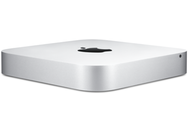
The new Mac mini: No SuperDrive.
The iMac was updated in May, with new Core i5 processors, new graphics processors, and Thunderbolt. Previous iMac updates saw marginal speed increases, but with the implementation of the new Sandy Bridge processors, we saw a more significant speed boost.
Apple builds more stores, shows plans for a “spaceship”
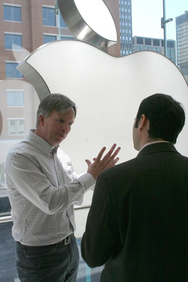
Senior VP of Retail Rob Johnson resigned from Apple in 2011.
In addition to opening new stores, Apple plans to build a new campus. In June, Steve Jobs presented plans to the city council of Cupertino to build a spaceship-like circular building that will fit 12,000 employees.
Minor updates
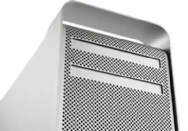
Apple last updated the Mac Pro in August 2010.
Apple’s iLife and iWork software suites saw only incremental maintenance updates. Apple’s latest versions of the AirPort Extreme and Time Capsule were released with little fanfare, with the upgrades offering better performance.
via : Macworld

This post was written by: Irfan Jam
Irfan Jam is a professional blogger, web designer and front end web developer. Follow him on Facebook




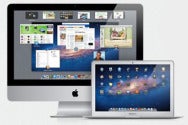









0 Responses to “2011 in review: The year in Mac”
Post a Comment